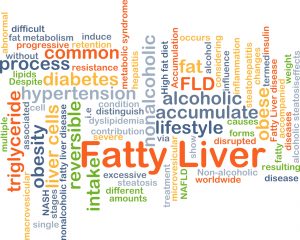 Type 2 diabetes increases the risk of non-alcoholic fatty liver disease (NAFLD) five-fold, according to research. Researchers from the Universities of Southampton and Edinburgh examined liver disease cases in diabetes patients in Scotland over the span of 10 years. The researchers found that in type 2 diabetics, liver disease rates are high but not because of alcohol consumption but rather the permeation of fat within the liver – also known as non-alcoholic fatty liver disease.
Type 2 diabetes increases the risk of non-alcoholic fatty liver disease (NAFLD) five-fold, according to research. Researchers from the Universities of Southampton and Edinburgh examined liver disease cases in diabetes patients in Scotland over the span of 10 years. The researchers found that in type 2 diabetics, liver disease rates are high but not because of alcohol consumption but rather the permeation of fat within the liver – also known as non-alcoholic fatty liver disease.
Non-alcoholic fatty liver disease is associated with obesity, which is a common risk factor for type 2 diabetes. With a healthy diet and regular exercise a person can lower their risk for type 2 diabetes as well as non-alcoholic liver disease. The researchers found that type 2 diabetes diagnosis increases the risk of NAFLD fivefold.
Advertisement
Patients living with NAFLD are more susceptible to the effects of alcohol and should avoid drinking alcohol in order to reduce these complications.
Living with NAFLD also increases the risk of compromised liver health – for example, the development of cirrhosis.
Researcher Professor Sarah Wild said, “Preventing non-alcoholic fatty liver disease by avoiding unhealthy lifestyles in both people with and without diabetes is important because it is difficult to treat the complications of this condition.” Prevention is important as the treatment options for NAFLD are limited.
Professor Chris Byrne, fellow researcher, concluded, “We have shown for the first time that type 2 diabetes is an important novel risk factor that increases numbers of hospital admissions and deaths, in people with all common chronic liver diseases. Further research is now needed to determine whether all patients with type 2 diabetes should be screened for common chronic liver diseases.”
Type 2 diabetes and fatty liver disease
Both non-alcoholic liver disease and type 2 diabetes share common risk factors, obesity being the main one. NAFLD occurs when fat permeates through the liver and accumulates there. This accumulation of fat reduces liver function and increases scarring, which over time can lead to cirrhosis and even liver cancer.
Advertisement
The liver plays a large role in blood sugar regulation. When the liver gets bogged down by fat, it cannot perform this function, which worsens blood sugar outcomes.
A fatty liver often goes undiagnosed as it is hard to detect and often goes symptomless until other bodily functions begin to go awry. The most reliable way to obtain a diagnosis for NAFLD is through a liver biopsy, but this procedure could be costly and invasive. More economic diagnostic methods include MRI and ultrasound, but these are not always reliable either.
The best way to avoid complications related to type 2 diabetes and NAFLD is preventing both conditions, which can very well be done through eating healthy, exercising regularly, maintaining a healthy weight, and minimizing or completely eliminating alcohol.
